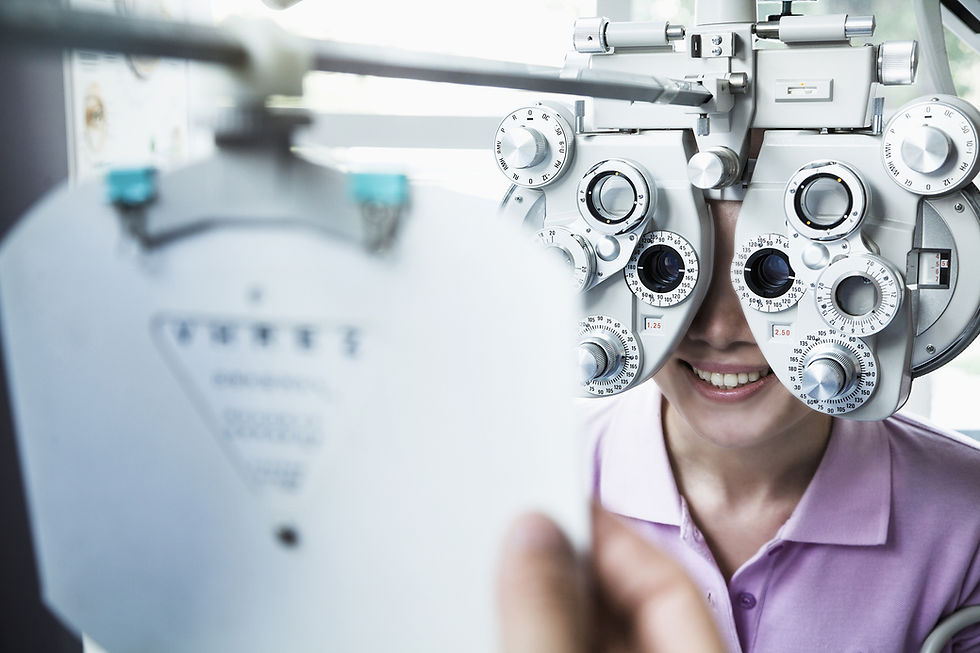
Imagine this: 1 in 3 kids today is at risk of losing their sight, and the culprit is something we all use daily – screens! 📱 From phones to tablets to televisions, our lives are centered around screens, but it’s having a worrying effect on kids' vision. Scientists are now ringing alarm bells, saying that excessive screen time is leading to a global rise in myopia (short-sightedness). So, what can we do to protect our kids? Don't worry, we’ve got you covered with tips to safeguard their eyesight! 💡👀
What’s the Problem? The Rise of Myopia in Kids 😱
In today’s digital world, children spend hours glued to screens – whether for schoolwork, playing video games, or watching their favorite shows. As fun as these activities are, they come with hidden dangers for their eyes. 📺 The constant near-vision work involved in screen time puts a significant strain on the eyes, leading to a higher risk of myopia or short-sightedness.
Myopia is a condition where distant objects appear blurry, and it's becoming increasingly common in children. Experts warn that by 2050, half the world’s population could be affected by this condition, primarily driven by the digital lifestyle that encourages prolonged indoor activity. 😬📊
The Science Behind It: Why Are Screens Bad for Eyes? 🔬
To understand why screens are so harmful, we need to dive into the science of eye development. When children spend too much time focusing on nearby objects, such as screens, their eyes adapt to this near vision, which can cause the eyeball to elongate over time. This elongation leads to blurred vision when trying to see distant objects, which is the core issue in myopia. 🧠🔍
Additionally, kids today are spending less time outdoors, and here’s why that matters: exposure to natural light plays a crucial role in maintaining healthy eye development. 🌞 Studies have shown that time spent outdoors can slow down the progression of myopia. But with kids glued to screens for both school and entertainment, they’re missing out on this vital aspect of their health.
What Are the Symptoms? When Should You Worry? 🚨
If you notice your child doing any of the following, it could be a sign of myopia or other vision issues:
Squinting when trying to see distant objects.
Holding devices too close to their face.
Complaining of headaches or eye strain.
Struggling to see the board in the classroom or even distant signs.
Early detection is key, so if you notice any of these symptoms, it's time for a visit to the eye doctor. 🏥👩⚕️
How to Protect Your Kids' Vision: Practical Tips 🛡️👀
Luckily, there are many ways to prevent and manage the effects of screen time on kids' eyes. Here are some easy tips to safeguard their vision:
Limit Screen Time 📱⏳: The most obvious but essential step is to cut down on the hours your child spends in front of screens. Set clear limits for entertainment and encourage screen breaks during online classes or homework.
Encourage Outdoor Play 🌳⚽: Kids need at least 2 hours of outdoor play daily to help balance their indoor screen time. Activities like running, cycling, and playing sports not only benefit their overall health but also help slow the progression of myopia.
The 20-20-20 Rule 🕰️: Make sure kids follow the 20-20-20 rule: every 20 minutes, look at something 20 feet away for 20 seconds. This gives their eyes a much-needed break from focusing on nearby objects.
Reduce Glare and Use Blue Light Filters 🔵: Blue light emitted from screens can contribute to eye strain. Reduce screen brightness and use blue light filters or apps to ease the load on their eyes.
Regular Eye Check-ups 👁️: Routine eye exams are crucial to catching problems early. The doctor can assess if your child needs glasses or if they need to take additional steps to protect their vision.
Create a Tech-Free Zone 🚫📱: Make bedrooms or certain times of the day, like during meals, a tech-free zone. This helps to break the screen-time habit and encourages other activities like reading, drawing, or playing board games.
The Digital Dilemma: Why Screens Aren’t Going Away Anytime Soon 💻🤯
While it’s clear that excessive screen time is harming kids' vision, the reality is that screens aren’t going away anytime soon. Schools are integrating more technology into classrooms, and kids are spending more time online for homework, gaming, and social media. 🌐📚
That’s why it's essential to strike a balance. While you can’t avoid screens altogether, you can moderate their usage and encourage healthier habits. The key is awareness — educating your kids about why too much screen time is harmful and giving them the tools to manage their usage effectively.
Can We Fix This? The Future of Vision Health 🧐🔮
While prevention is always better than cure, there are also new technologies on the horizon that could help manage myopia. Specialized glasses and contact lenses are being developed to slow the progression of short-sightedness in children. 🌐🔬 Additionally, eye drops and other medical treatments are being researched as ways to curb the effects of excessive screen use.
However, no matter what technology comes along, the best solution will always be good habits. Limiting screen time, spending more time outdoors, and getting regular eye check-ups are simple steps that can protect your child’s vision for the long term. 👓💡
Parents, It’s Time to Take Action! 🏃♀️💨
The modern world makes it tough to limit screen exposure, but there are ways to reduce the negative effects. Encourage outdoor play, limit screen time, and make sure to get those regular eye check-ups. As parents, we have the power to protect our kids' vision before it's too late! 🙌👁️
It’s not just about banning screens altogether – it’s about balance and creating healthier habits. With some simple lifestyle changes, you can ensure that your kids have bright, healthy eyes for years to come. 🌟👀


























